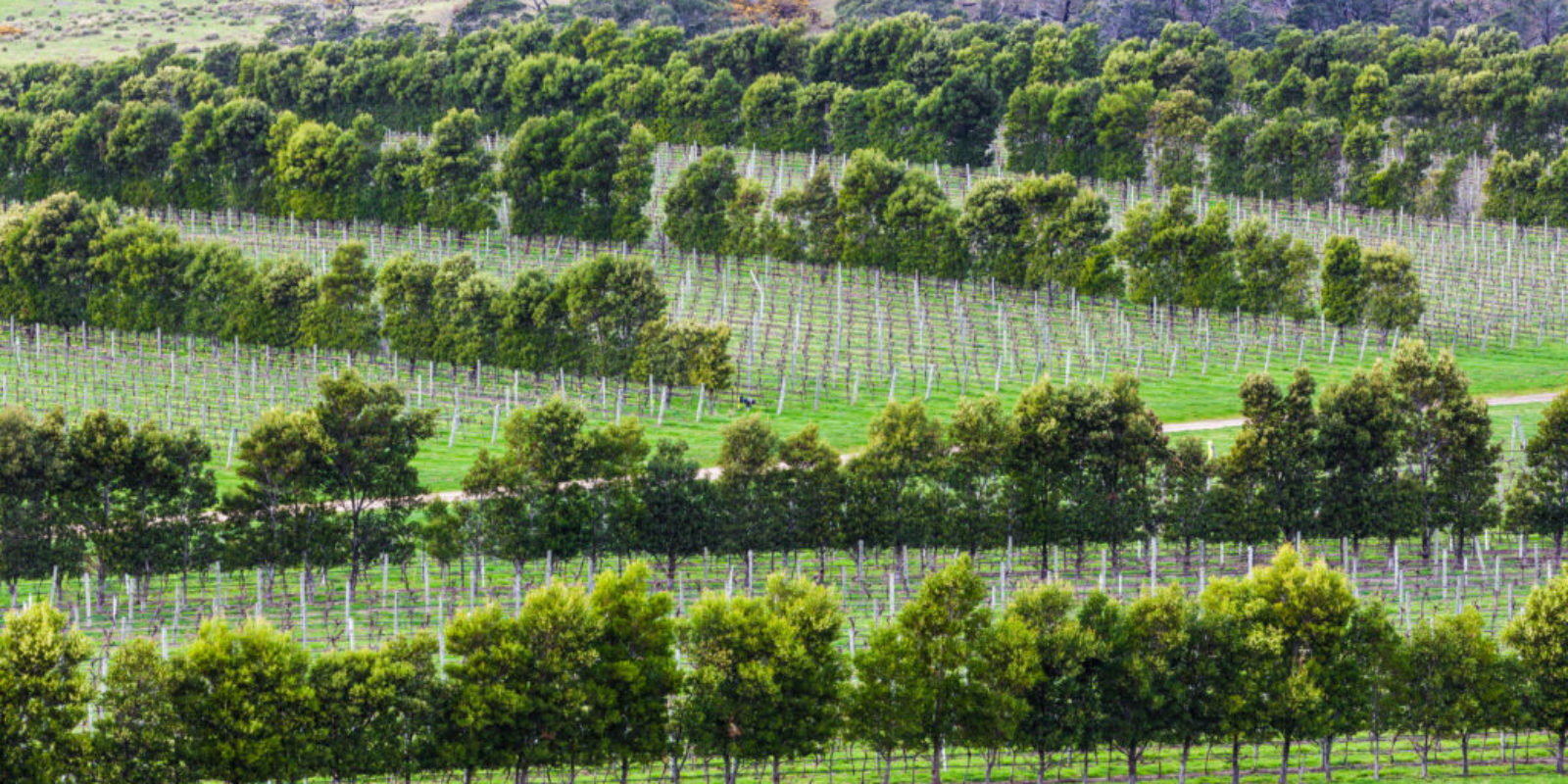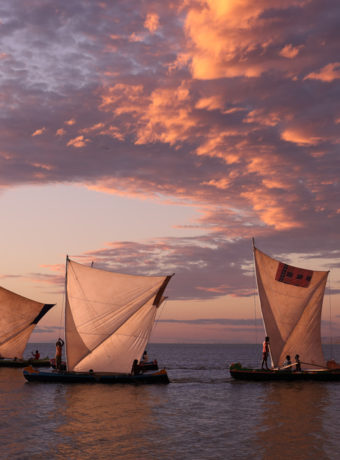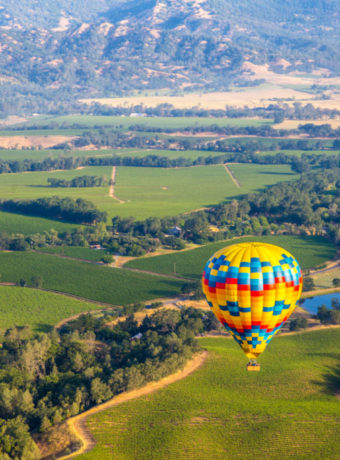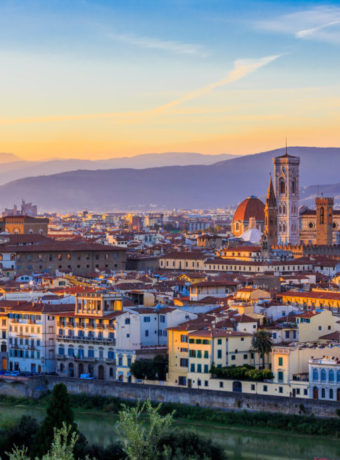As promised, this week I’ve got two bonus posts because I spent too much time talking about New Zealand wine! Today, we hop the ditch to Australia and pick up where I left off in Friday’s intro paragraph. Every Australian state produces wine, although the more well known wineries are in Victoria, South Australia, and New South Wales. I break these down into more detail a little further down.
Australian wine
Early Australian settlers faced a lot of problems when they tried planting grapes. The first grapes came over with the First Fleet in 1788, but it was almost a half century later that winegrowers were able to grow (and produce) successful wines. The biggest hurdle was the Australian climate, since it is vastly different from what most European settlers were used to. In the late 1800s, several wines began to win awards in European competitions.
For a long time, Australian wine was sweet and/or fortified. Not all of it, mind you, but the majority. However, the 20th century saw a shift in the style of wine produced. Today, the most well known wine is Shiraz, but Cabernet Sauvignon, Merlot, Chardonnay, Sauvignon Blanc, Riesling, and Semillon are also widely produced. Of those, Shiraz, Cabernet, and Chardonnay make up the largest percentage of hectares planted.
New South Wales

New South Wales’ most well known wine region is the Hunter Valley. The Hunter Valley was one of the first regions planted in the 19th century, and its proximity to Sydney certainly helped its trade status. Today tourism is a big factor here. The region is located a short distance from Sydney, Australia, making a trip into the Hunter Valley a great day or overnight trip from the city.

Despite the name, the Hunter River isn’t the defining feature of the landscape; that demarcation belongs to the Brokenback Mountains. Semillon and Chardonnay grapes make up the majority of vines here. The climate in the Hunter Valley is similar to Napa Valley. While Australia is classified as having a Mediterranean climate, the mountains help to funnel cool ocean winds into the valley. The region is one of the largest in the country, although it is not the largest in New South Wales. The Hunter Valley region also only accounts for 3% of all wine produced in Australia. Because of its size, it is broken down into three smaller subregions: Broke Fordwich, Pokolbin, and Upper Hunter Valley. (There might be others, but these are the only recognised ones.)
Victoria

Victoria’s capital, Melbourne, is one of the world’s great foodie cities. It’s also home to exceptional coffee roasters, breweries, cideries, and hundreds of wineries in Gippsland, Rutherglen, Kings Valley, Yarra Valley and Mornington Peninsula. In fact, while it has more wineries than any other Australian state, it is third in overall wine production behind NSW and South Australia. This is due to a lack of one mass-producing area like those two regions do have.
Early settlers planted the first grapes in the mid 1800s. Today, there are five major zones of Victorian vineyards. Under Australian law, zones equal appellations (see the bit about Hunter Valley above) but get broken down into more regions. Popular destinations like Yarra Valley, which is right near Melbourne, and Murray Darling and Swan Hill, in northwestern Victoria, make up some of the subregions of Australian wine.

Victoria has a lot of different varietals, from mainstays Shiraz and Chardonnay to Tannat, Sangiovese, and Viognier (among others). Wine tours that leave from Melbourne typically head to the Port Phillip region, which includes the Mornington Peninsula and Yarra Valley.
If it suits your fancy, you could stay out on the Mornington Peninsula and explore the many exciting towns and wildlife encounters there. Phillip Island, home to the blue penguins, is a popular activity. Another option, if leaving the city isn’t ideal, is to take one of the many food tours in Melbourne that also highlight the local wine. Trust me, there are a bunch!
South Australia

South Australia is the largest producer of wine in Australia, producing over half of the country’s wine. Well-known wine brands like Jacobs Creek, Yalumba, and Penfolds come from here as does a lot of the box wine.

(Sorry, I couldn’t resist! Haha!)
Similar to the rest of the Australian states, settlers planted the first grapes in the mid-19th century. South Australia has a great climate for growing wine, since the interior is hot and dry while the Adelaide Hills are much cooler. The entire state receives less rainfall than others.

There are eight geographical appellation regions in South Australia BUT they also use a “super zone” which consists of the three major regions around Adelaide, Australia. These are the Barossa zone, the Mount Lofty Range zone, and the Fleurieu zone.
South Australia is known for Shiraz; it’s definitely the grape that made this region famous. However, Riesling grown in the Clare Valley is quickly making a name for itself. Cool, eh?
Western Australia

When you think of Western Australia, most people think of the capital city, Perth, and then … nothing. A lot of travellers skip WA during their Australian adventure simply because it is difficult to incorporate on a short two-week trip to the continent. Perth is a four hour flight from Melbourne, and even longer from Sydney or Brisbane. It’s like flying from New York to LA for two days. Doable, but exhausting. And you’d never see it all, so most people don’t bother.
HOWEVER, if you have the time, Perth, Australia is a must-visit city. Western Australia’s wine regions cluster in the small southwestern tip, a three-hour drive from Perth. The rest of the state is much too hot for wine production. And, despite WA being the largest Australian state, it only accounts for 5% of Australian wine production. The most recognisable wine regions are Margaret River and Great Southern. The third region, Swan Valley, was the site of the first vines planted in Western Australia. However, it’s extraordinarily hot in the Swan Valley and a lot of vintners established wineries in the cooler regions.
The Margaret River wine region also has a wide variety of local farmers, chocolate factories, breweries, and artist galleries. This, combined with the accessibility to Perth and the many accommodation choices makes it a great place to spend a weekend. Further south, the Great Southern wine region is Australia’s largest wine region. It’s cooler than Margaret River but receives less rainfall. Both regions produce excellent Cabernet Sauvignon, Chardonnay, Riesling, and Merlot. Other varietals include Shiraz, Pinot Noir, Sauvignon Blanc, and Semillon. The Semillon Sauvignon Blanc (SSB or SBS, depending on the amount of each varietal) blend produced in the Margaret River region is one of the best in the world.
Tasmania
Tasmania has grown wine for almost as long as other Australian states, but it only recently became internationally acclaimed. The island state has a great climate – cool winds, great soil, and plenty of rain in addition to sunny days and warm northerly winds. This means that the entire state is suited to growing dry, aromatic whites like Pinot Gris, Chardonnay, and sparkling wines. Most wineries are located near Hobart and Launceston. A friend of mine recently went on a fam trip to Melbourne and Tasmania, and came home with glowing reviews of the wineries they visited. Since Tassie is a short flight from Melbourne, it’s a great addition to a two week Australian itinerary. There are some excellent luxury (Virtuoso!) properties in Tasmania too.
**
We’re continuing our global wine tour this week. Did you miss last week’s posts? Check them out here!
European wine regions || North American wine || South American wine || New Zealand wine






